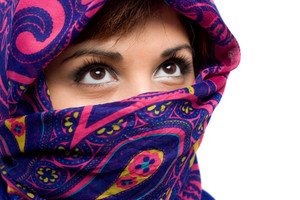https://www.youtube.com/embed/cNMwgaw1-Tk
I’m Indy Neidell, and this is Out of The
Foxholes, where I sit here in the Chair of Infinite knowledge and answer all your questions
about the second world war. Henk Twerda asks:
When did the British government come to know that Nazi Germany was going to attack the
Soviet Union? Operation Barbarossa, the planned German attack
on the Soviet Union, is something that has been underway since July of last year- 1940. Already then, one particular Brit prophesized
that Germany would soon turn her attention towards the Soviet Union: Prime Minister Winston
Churchill. The Soviets are the only real obstacle left
besides Britain in creating Hitler’s dream of German hegemony in Europe. Churchill reaches out to Joseph Stalin, who
dismisses him, thinking that it is a ruse to bring the Soviet Union into the war.
British intelligence receive small hints of
the attack in August and then in autumn 1940. However, it is first in early 1941 that Churchill’s
fears begin to be backed up by actual hard evidence. Polish underground movements report a massive
influx of German troops into Poland. In April, decryption of German radio traffic
shows a steady flow of troops and trains toward the German-Soviet border. In May, decrypted Enigma signals have the
same results. The idea of a German attack on the Soviet
Union becomes more and more widespread among British leaders. Churchill wires Stalin again, and again Stalin
dismisses him, still not trusting the British. More Enigma signals further show what way
the wind is blowing and British suspicions get stronger and stronger. Still, it isn’t until June 1941, when the
Wehrmacht actually crosses the border into the Soviet Union, that the British become
100% aware of what is happening.
Harel Khalifa asks:
What happened to Jewish communities in Ethiopia during WW2? -
When Benito Mussolini invades and conquers Abyssinia- now Ethiopia in 1935, Jews living
there can be divided into two categories: regular Jews and the Beta Israel community. The Beta Israel is a distinct Jewish community
that has lived mostly isolated from the outside world in northwestern Ethiopia for a millennium. Even though they are Jews, they have developed
their own culture, traditions and values, and it is debated if these were “real”
Jews or not. Now, when Italy initially annexes the land,
Mussolini tries to paint a picture of benevolence. The orthodox Christian Emperor Haile Selassie
had been far from a perfect ruler for the Ethiopian Jews, and Mussolini tries to take
the place of “savior”.
This is a gigantic farce. First of all, the Ethiopian Jews are seen
as a lesser race by the Italians in general, as they are both black and Jewish. They are often harassed. The Fascist regime is not as anti-Semitic
as the Nazi one, though, and the Italians are seen by many Ethiopian Jews as just slightly
worse than Haile Selassie. Nevertheless, Benito Mussolini still recognizes
the “Jewish Question” in German occupied Europe, and for that, he has a very bizarre
answer. He states that “the universal Jewish problem
can only be resolved in one way: By the creation in some part of the world, not in Palestine,
of a Jewish state”.

But if not in Palestine, then where? According to Mussolini, in northwestern Ethiopia
alongside the Beta Israel community. You simply take all the worlds Jews, put them
in the districts of Gojjam and Begemder, and voilà – problem solved! This would then create a semi-autonomous Jewish
state still ruled by Rome. But this never happened. I was wondering what happened to prisoners
of war when their country surrendered to Germany. Did they get to go home or were they kept
in work/concentration camps? When Poland falls in 1939, and Western Europe
follows suit in 1940, Germany now has on its hands around 2.5 million POWs. This is far more than German High Command
ever expected before the outbreak of war. The majority of these – close on to two
million – are French. These prisoners are kept in a whole bunch
of POW camps all across Germany. Now, Germany, alongside all the other big
powers except for Japan and the Soviet Union, had signed and ratified the Geneva Convention
back in 1929, with its provisions for prisoners of war. Side note here: Joseph Stalin did not sign
the Geneva Convention because in his eyes no soldier of the Red Army would ever surrender.
The Geneva Convention dictates that POW’s
can correspond with family and friends, practice their religion, and refuse to give up any
information except for name and rank. It also states that wounded prisoners are
to be treated. No more than one month in solitary confinement
is to be given as punishment for a prisoner who has tried to escape. The Red Cross should also be allowed to inspect
POW camps. Okay, so did Germany then adhere to this? Well, no, but not as badly as you might think
here in 1941. Especially the British, Dutch and Norwegian
prisoners are treated pretty well, being Anglo-Saxon or Germanic ‘races’. They are placed in proper living conditions
and their German captors behave reasonably towards them. British prisoners quickly agree that German
camps are far better than the Italian ones, for example. Even so, conditions are harsh. Men are forced to perform heavy manual labor,
and rations are often meagre. The Red Cross deliver food and cigarettes,
but they can’t help everywhere.
The conditions are much tougher for French
and Polish prisoners, who do not receive the same “benefits” in housing and workload. Jewish soldiers are harassed and often shot
upon capture. French POWs are a real problem for Philippe
Pétain and the Vichy government. Adolf Hitler states that ALL of the prisoners
will be returned after an armistice is signed with Britain. However, after the Battle of Britain, this
does not seem like it’s going to happen any time soon. Meanwhile, there is a severe labor shortage
in France. So- in late 1940, Germany begin to repatriate
French POWs whose professions are badly needed like doctors and postal workers. In 1941, this policy is extended to include
POW’s who served in the Great War or who have four or more children. One particular prisoner released in this period
is philosopher Jean-Paul Sartre. Still, a large part of the French male population
remains as prisoners inside Germany. During the war, 70.000 French POWs will escape
from German camps. Okay, thay is all for today for OOTF. If you have a question you want answered,
follow the link in the description to the TimeGhost community where you can ask it.
If you would like to see our Between Two Wars
episode about the Italian invasion of Abyssinia, you can click right here for that. Do not forget to subscribe and I will see
you next time..
african instruments
https://howtoplaythedjembedrums.com/barbarossa-african-jews-and-the-fate-of-pows-in-germany-ww2-out-of-the-foxholes-009/






